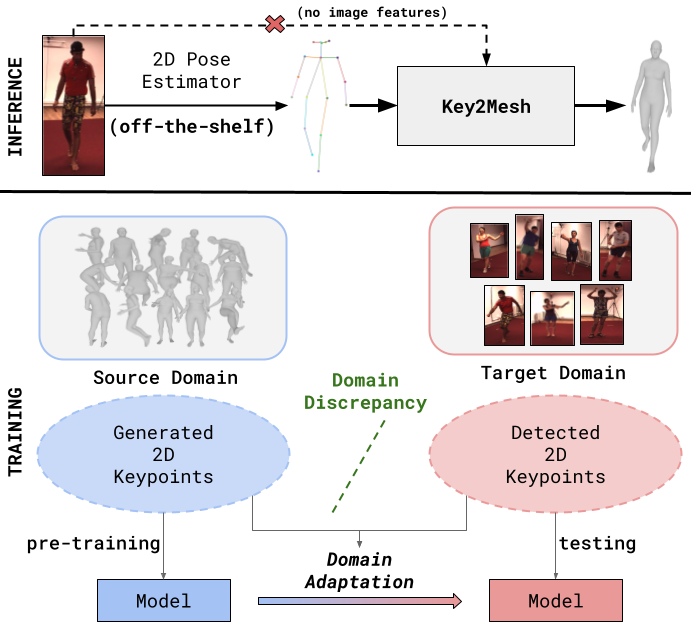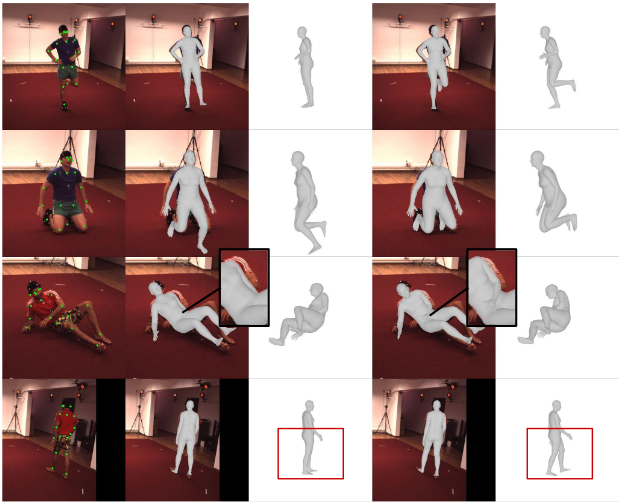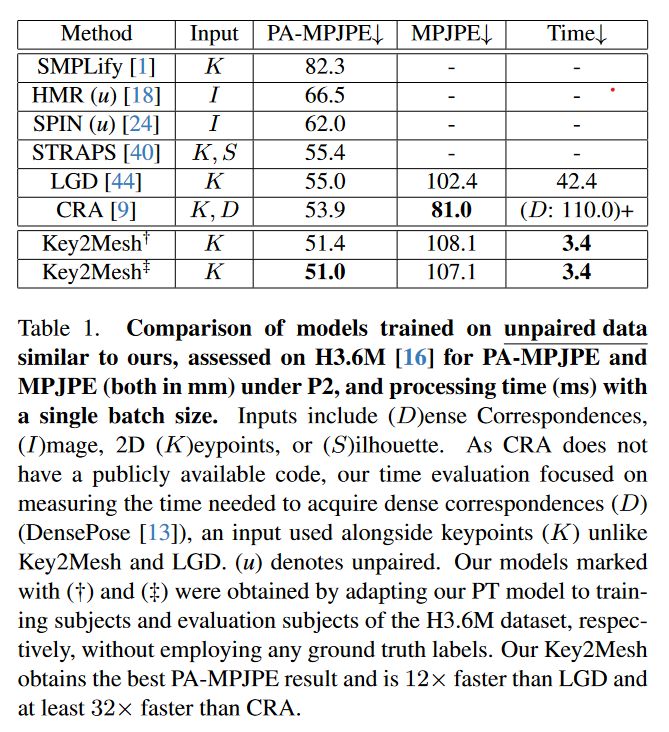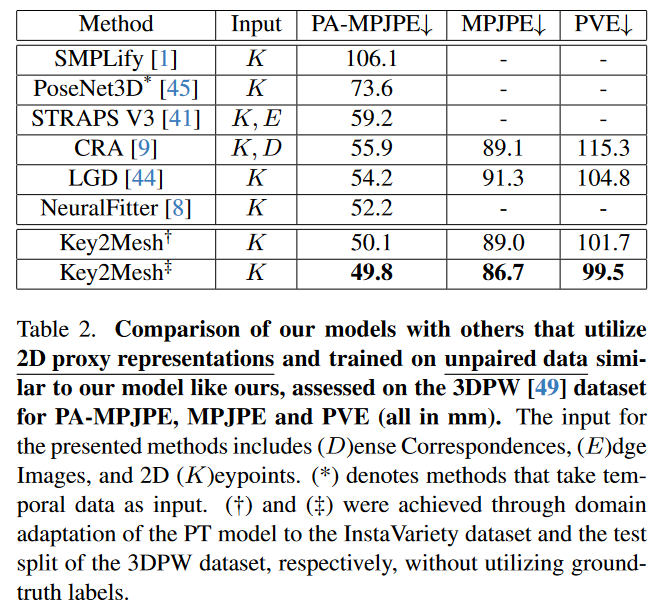
An overview of Key2Mesh's inference and training process.




@inproceedings{uguz2024mocaptovisual,
title={MoCap-to-Visual Domain Adaptation for Efficient Human Mesh Estimation from 2D Keypoints},
author={Bedirhan Uguz and Ozhan Suat and Batuhan Karagoz and Emre Akbas},
year={2024},
booktitle={IEEE/CVF Conference on Computer Vision and Pattern Recognition (CVPR) Workshops},
url={https://key2mesh.github.io/}
}